CPA demands action from UCI over vehicles and rider safety
Rider association calls for speed limits and tighter certification procedures
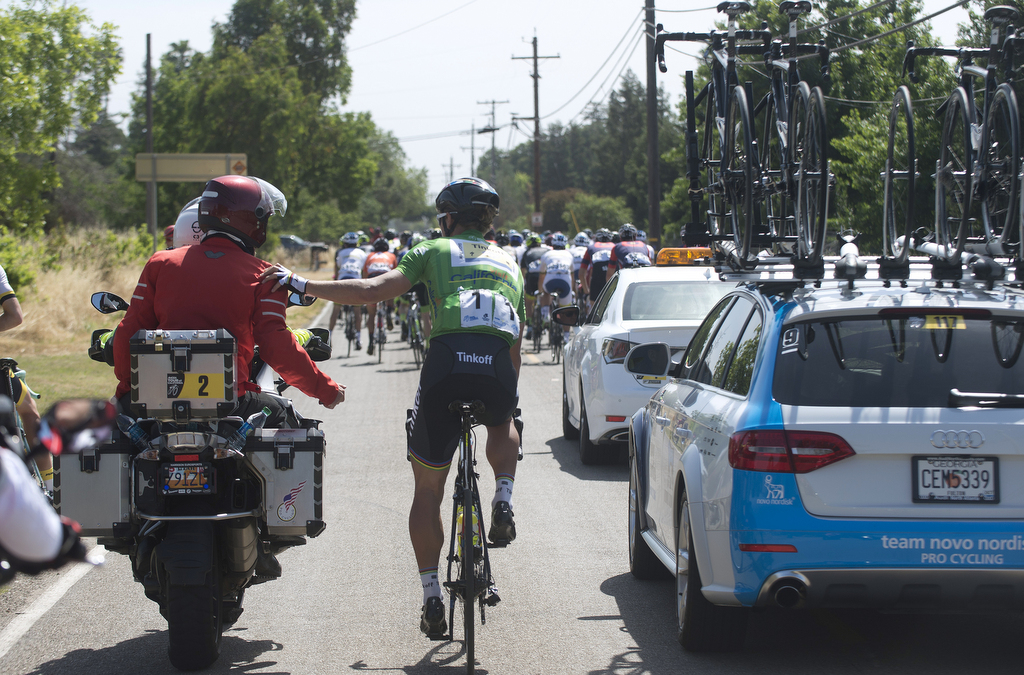
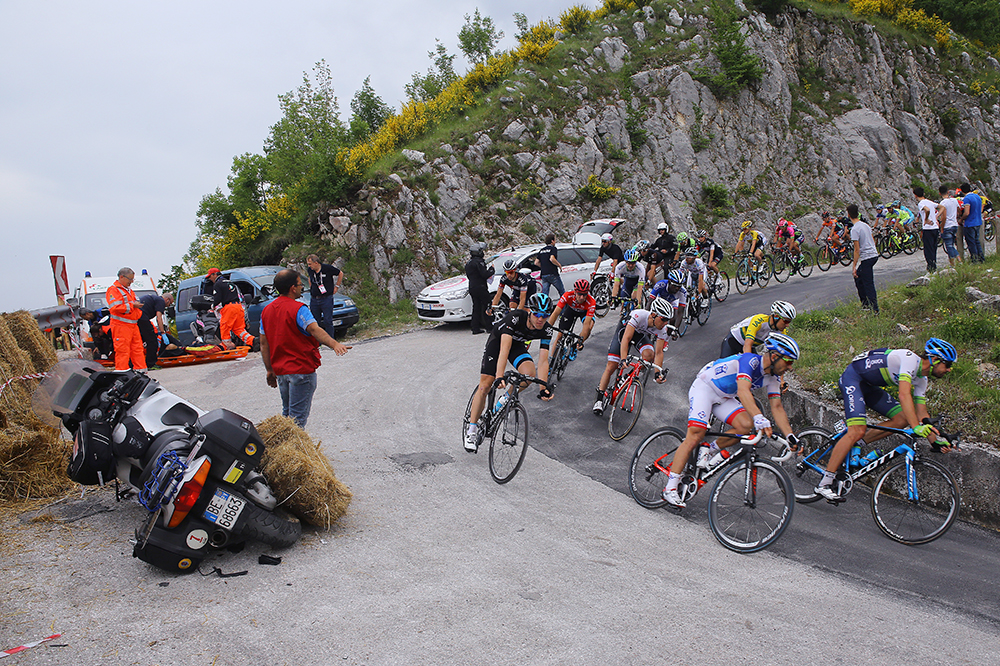
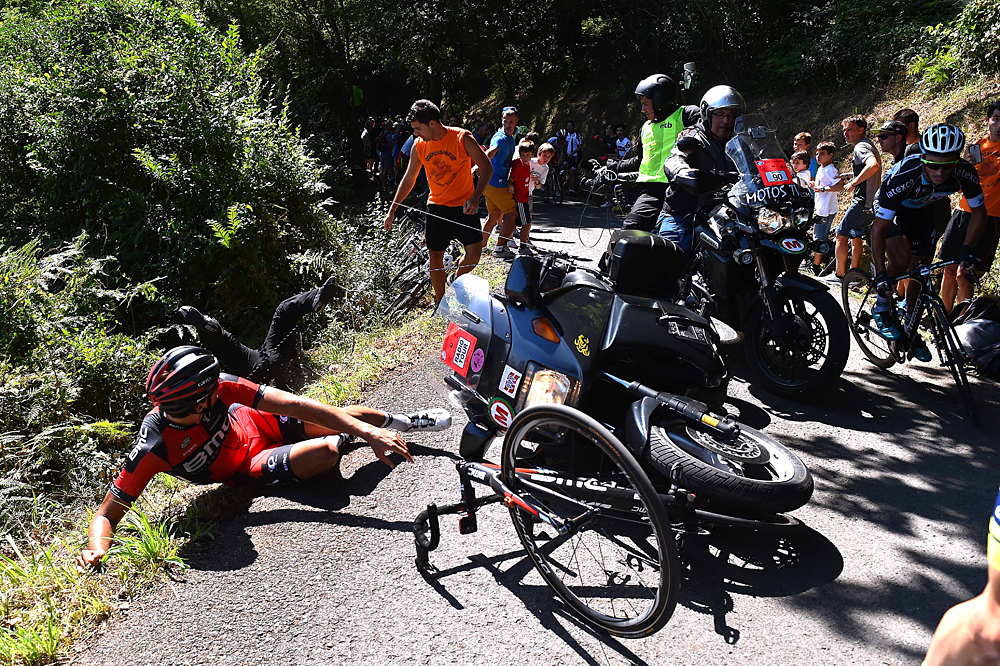
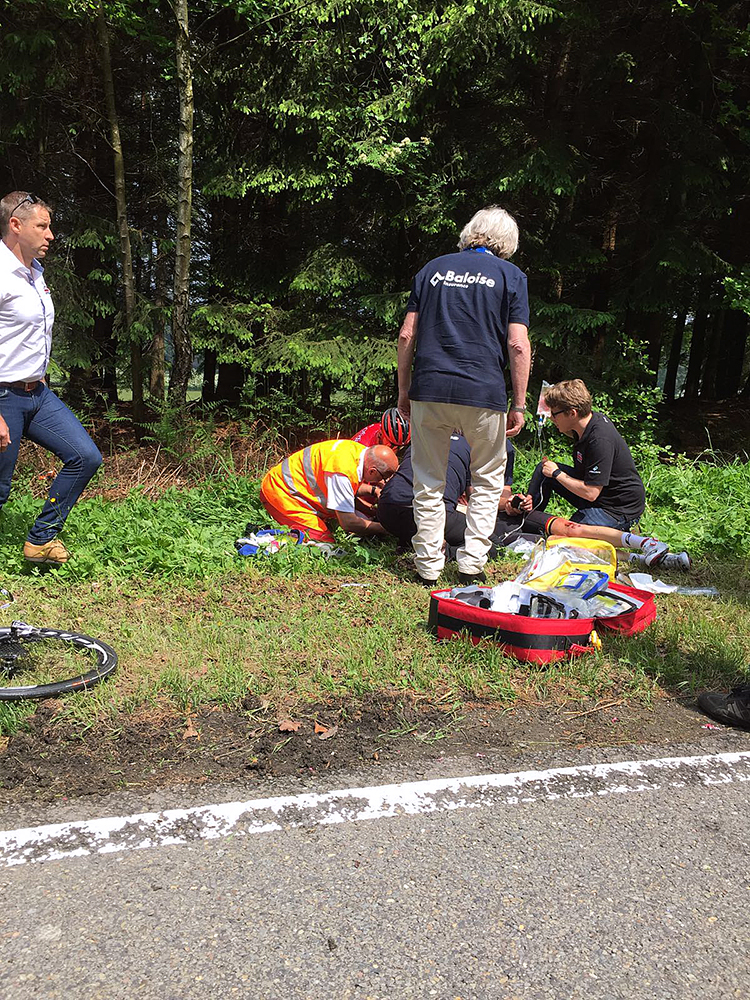
The Cyclistes Professionels Associés (CPA), the professional riders’ association, has called on the UCI to take concrete action to improve rider safety in relation to in-race vehicles.
The UCI’s management committee has convened in Lausanne for two days of wide-ranging discussions, and the CPA have taken a list of demands covering various aspects of safety at races, appealing to the UCI to take responsibility instead of leaving it all down to individual race organisers.
One of the main areas concerns the race caravan – an issue that has intensified in the last couple of years due to an alarming string of incidents involving collisions between riders and vehicles. The most tragic saw Antoine Demoitié lose his life after being hit by a motorbike at this year’s Gent-Wevelgem, while Stig Broeckx is currently in a coma after two motorbikes caused a huge crash at the Belgium Tour last weekend.
The CPA does not advocate a reduction in the number of race vehicles – a line of thought recently refuted by Tom Boonen – but called for speed limits when passing the peloton, along with more stringent levels of certification for drivers, and harsher punishment for bad driving.
Their document of proposals was distributed to the press and Cyclingnews has published below the page relating to the race caravan, so you can read the six areas of proposals in full.
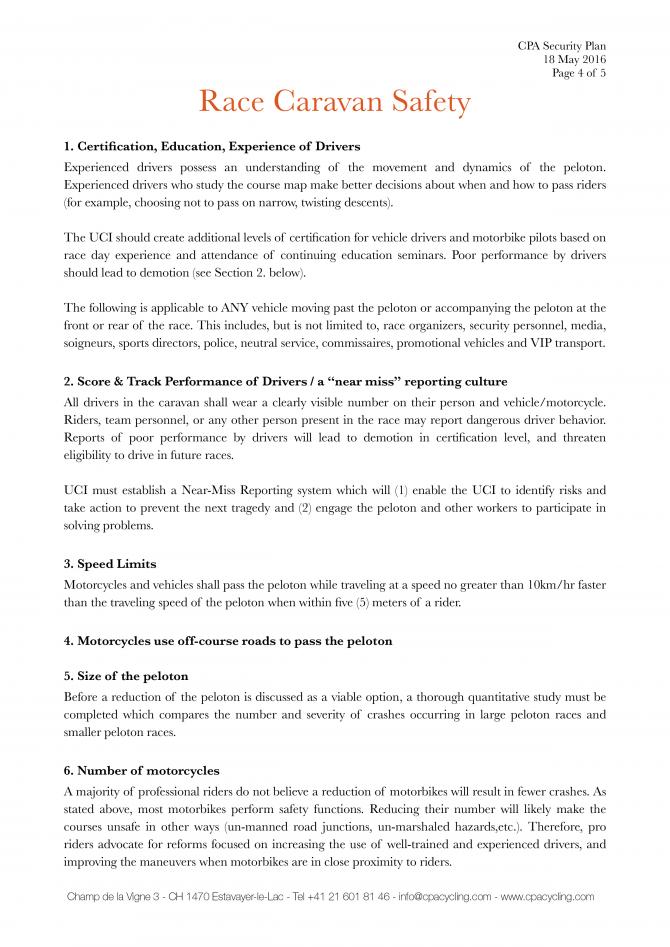
Mandatory 3km risk assessment
The race caravan regulations form part of a wider issue for the CPA, which is that of the UCI distancing themselves from the responsibilities and accountabilities of race safety.
"According to the UCI Regulations the UCI accepts no responsibility for course design, the conduct of the caravan, or the safety of riders in general. Instead all responsibility is placed on the race organizer," read the CPA's statement, going on to list the relevant regulations in the UCI code.
Get The Leadout Newsletter
The latest race content, interviews, features, reviews and expert buying guides, direct to your inbox!
"The UCI must expand its mandate to develop and publish technical safety specifications applicable to UCI-sanctioned road races; monitor compliance; enforce penalties for violations; and dispatch UCI resources to assist organisers to meet the minimum standard."
One of the major proposals being tabled covers course design in the final three kilometres, and the CPA is pushing for a Mandatory Risk Assessment for all races with input from the UCI, CPA, and the AIGCP teams' association.
At the moment, the UCI's only regulation says that there should be barriers at least 300 metres before the finish line and 100 metres after it. The CPA want this raised to 500 and 100 but, more importantly, they want an initial risk assessment to take place at least 30 days before the race, with further assessments carried out the day before the race, the morning of the race, and 30 minutes before the arrival of the race.
The proposals include measures against obstacles in the road, with straw bales to protect riders and more marshals to warn them.
One of the incidents highlighted was Peter Stetina's awful crash at last year's Vuelta al País Vasco, where the American collided at speed with a bollard - whose danger was marked only by a traffic cone placed on top - and broke his patella, tibia, and four ribs. The CPA hopes its proposed measures, with the UCI accountable, would signal an end to such incidents - also seen on stage 2 of this year's Tour of Qatar.
The Mandatory Risk Assessment form would include a description of the risk, the level of risk, the location, and control measures to be taken. The CPA would also recommend this be carried out for the rest of the course in its entirety.
Patrick is a freelance sports writer and editor. He’s an NCTJ-accredited journalist with a bachelor’s degree in modern languages (French and Spanish). Patrick worked full-time at Cyclingnews for eight years between 2015 and 2023, latterly as Deputy Editor.
